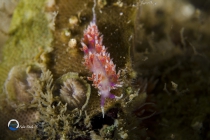MolluscaBase taxon details
Phetia Korshunova, Fletcher & Martynov, 2025
1829397 (urn:lsid:marinespecies.org:taxname:1829397)
accepted
Genus
Piseinotecus soussi Tamsouri, Carmona, Moukrim & Cervera, 2014 accepted as Phetia soussi (Tamsouri, Carmona, Moukrim & Cervera, 2014) (type by original designation)
marine, brackish, fresh, terrestrial
feminine
Korshunova, T.; Fletcher, K.; Martynov, A. (2025). The endless forms are the most differentiated — how taxonomic pseudo-optimization masked natural diversity and evolution: the nudibranch case. <em>Zoological Journal of the Linnean Society.</em> 204(4): zlaf057: 1-93., available online at https://doi.org/10.1093/zoolinnean/zlaf057
page(s): 26 [details] Available for editors [request]
[request]
page(s): 26 [details] Available for editors
Etymology After a shorter variant of spelling ‘Phetida’ attributed to the Ancient Greek sea goddess, Thetys, in reference to the...
Etymology After a shorter variant of spelling ‘Phetida’ attributed to the Ancient Greek sea goddess, Thetys, in reference to the ancient ocean, Thetys, which includes the modern Mediterranean Sea, to denote the Thetys-related origin of the new genus. [details]
MolluscaBase eds. (2025). MolluscaBase. Phetia Korshunova, Fletcher & Martynov, 2025. Accessed at: https://www.molluscabase.org/aphia.php?p=taxdetails&id=1829397 on 2025-09-11
Date
action
by
![]() The webpage text is licensed under a Creative Commons
Attribution 4.0 License
The webpage text is licensed under a Creative Commons
Attribution 4.0 License
original description
Korshunova, T.; Fletcher, K.; Martynov, A. (2025). The endless forms are the most differentiated — how taxonomic pseudo-optimization masked natural diversity and evolution: the nudibranch case. <em>Zoological Journal of the Linnean Society.</em> 204(4): zlaf057: 1-93., available online at https://doi.org/10.1093/zoolinnean/zlaf057
page(s): 26 [details] Available for editors [request]
[request]
page(s): 26 [details] Available for editors
From editor or global species database
Etymology After a shorter variant of spelling ‘Phetida’ attributed to the Ancient Greek sea goddess, Thetys, in reference to the ancient ocean, Thetys, which includes the modern Mediterranean Sea, to denote the Thetys-related origin of the new genus. [details]


